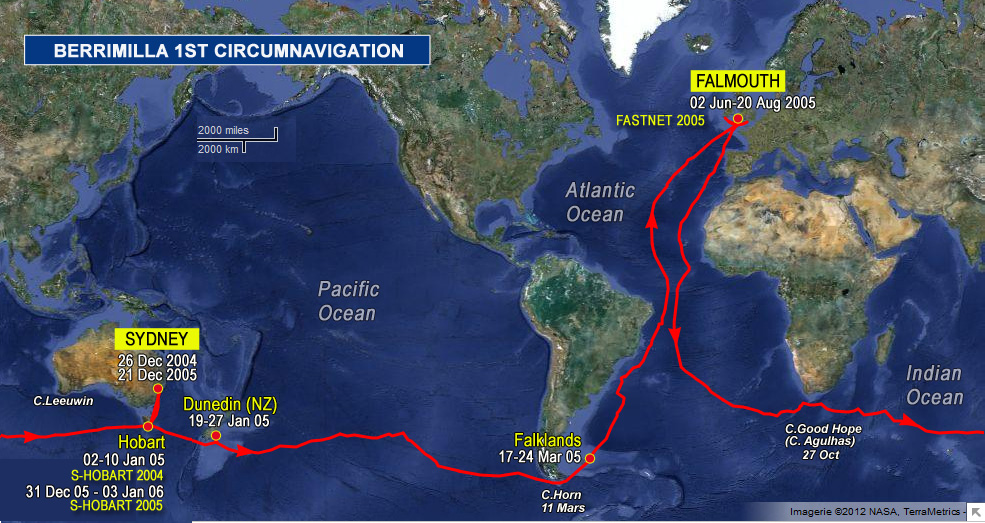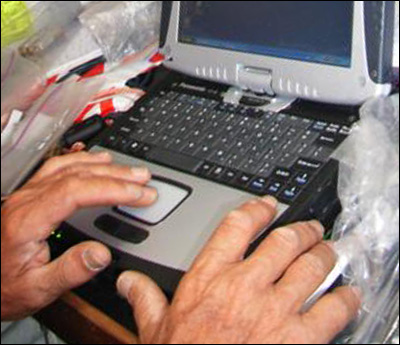2215hrs 14 Apr 2005 UTC Map Ref 166
Here we still are, looking at Rio from afar. The wind is from the north east, where we want to go, so we’re doing long tacks to get around Cabo Frio, or, more precisely, what seem to be a series of oil rigs on the edge of the continental shelf to the east of Frio. I will be very glad indeed when we eventually get round that corner and happier still when we get into the trades. We can see them, tantalisingly close, on the grib, but lots of work to get there. Once we do, they should take us most of the way to the equator. And a long way out to sea, about 700 miles from here to the north east is Martin Vaz Island – tiny inhabited island belonging to Brazil.
Last night, a very large ship came out of the east. swung around our stern and ‘parked’ about a mile away on our beam. Disconcerting. I called them and discovered it was the Orient Constellation and they were just making sure we were ok. Very short conversation – perhaps I should have asked them more – looked like a tanker. Once we had spoken they altered course again and disappeared very quickly.
Fiona, we did hear about the Skiff episode from Fenwick – doesn’t hurt to rub it in a bit though.
Arlette, keep on truckin’ and have a birthday bash for me on the 22nd. We’re still dunking shortbread and jammy thingies.
Jenna, thanks for lovely note – I’ll write you a separate reply but I’ll answer your questions here – yes, it’s generally heaps scarier at night – not sure why, but it may be the haunted house effect – just another house in daylight but comes alive at night. Also, the noise and the spray and everything seem to be magnified and I get that numb feeling that it’s all going to happen…everything tightens up and I sit (when possible – often not) and listen and fret. Different kind of scary when you cant see something too – the imagination at work.
Ocean waves are physically just the same as beach waves except that they don’t have a sloping beach under them. They are often much bigger – in the southern ocean they can build up over a fetch that goes right around the world, so each wave has enormous energy but the water itself is not moving forwards – only up and down. But when the wave gets to a sloping shore, the lower part of it is deflected – slowed down – causing the wave form to collapse at the top and the water starts to surge forward – this is the breaking wave on a beach. The same breaking effect is caused by the wind actually moving the water in the tops of ocean waves forwards, causing it to break – huge and very frightening if you are under it. Oceanographers may quibble with this description, but it’s more or less what happens.
We don’t do any fishing although we might – and we are towing a turbine on a 40 metre line too, which complicates things. We hope to get some flying fish on board at night as we go north.
Wildlife – the Dinos are back – phosphorescence all around, big sparkly flashes along with rather misty greenish ligt in the water. And one solitary seabird – a tern perhaps, with a split tail. The first one for several days, surprising this close to land.

 The logs ramblings can be cryptic, so we have added:
The logs ramblings can be cryptic, so we have added: